Starlink Compendium
This article will be regularly updated based on the latest information (list of recent changes can be found at the end of the article). You can easily access the article from the main menu in the “Compendiums” section.
One of SpaceX’s many ambitious projects apart from colonizing Mars and achieve rapid rocket reusability is to build Starlink, a huge satellite constellation in low Earth orbit, which will provide fast internet connectivity around the world. The constellation could also represent a significant source of revenue that SpaceX would like to use to finance development of more advanced rockets and spacecraft.
Last Update: June 30, 2021
(changelog)
Skip to section:
- Starlink’s purpose
- History of the project
- Constellation parameters
- Satellites
- User terminals
- Project schedule
- Project financing
- Launching the satellites
- List of launches
- Safety and space debris
- Impacts on astronomy and astrophotography
- How to watch Starlink satellites in the sky
- Competition
Starlink’s purpose
The internet connection provided by Starlink will be particularly useful in remote areas and developing countries where people do not have access to the Internet, however Starlink will also compete with internet providers in areas where people might have slow or expensive access. According to the UN, currently about 57% of the world’s population does not have internet access, so the potential market is enormous.
SpaceX hopes Starlink will become a major source of revenue, which the company can then use to develop more advanced rockets and spacecraft and eventually enable the colonization of Mars. SpaceX’s annual revenue from its launch business is expected to max out at about 3 billion USD, while the revenue from Starlink could be around 30 billion. Elon Musk says SpaceX would like to control about 3% of global telecommunications revenue, which reaches approximately 1 trillion USD a year. However, SpaceX says it is not trying to replace existing telcos, but rather to cooperate with them.
History of the project
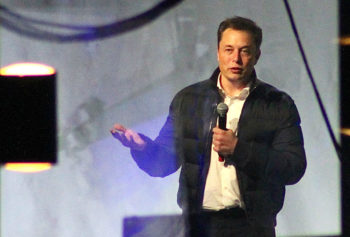
Elon Musk in Seattle in 2015, announcing plans for a large satellite constellation that would become Starlink (Credit: GeekWire)
In January 2015, SpaceX announced plans to build a large internet constellation, but the company did not talk about it much for a long time afterwards. It didn’t lift the veil of secrecy until May 2019 when the first batch of satellites for this project were scheduled to launch. However, even before that, a number of things could have been gleaned from various FCC filings. The design of the entire constellation has also undergone significant changes over the years. Eventually, the project became known as Starlink, the name inspired by the novel The Fault in Our Stars, according to Elon Musk.
SpaceX originally planned a constellation consisting of 4,425 satellites at altitudes around 1,200 km, which would later be supplemented by a set of 7,518 satellites located in orbits at an altitude of about 320 km. The FCC granted a license to SpaceX to operate the first 4,425 satellites in March 2018, which triggered an important countdown. The FCC requires satellite companies to deploy half of the planned number of satellites within 6 years of receiving the initial authorization. On top of that, the FCC requires all satellites to be in orbit within 9 years. If companies fail to meet these deadlines, they’ll be allowed to operate only as many satellites as had been deployed before the deadline.
In November 2018, SpaceX also received permission from the FCC to launch and operate the remaining 7,518 satellites. At the same time, SpaceX asked for the previous license to be modified. Instead of operating all 4,425 satellites at an altitude around 1,100 km, the company planned to operate only 2,825 satellites there, while adding 1,584 satellites that would orbit at 550 km. At the time, the complete constellation would consist of 11,924 satellites in total:
- 1,584 satellites positioned at altitude of 550 km, split into 72 orbital planes with 22 satellites each, with 53° inclination (these satellites are being deployed first)
- 2,825 satellites positioned between 1,110 km and 1,325 km, split into several different planes with different inclinations
- 7,518 satellites positioned at an altitude of 320 km (these will most likely be the last ones to be deployed)
The first 1584 satellites were originally planned to be split into 24 orbital planes with 66 satellites each but in September 2019, SpaceX asked the FCC to modify its existing license in order to change the way its satellites are deployed in orbit. The request was approved in December 2019 so the satellites will be split into 72 planes of 22 satellite instead. However, the total number of satellites would remain the same.
In April 2020, SpaceX requested a further modification of the original FCC license, but this time it was a significant change to the placement of Starlink satellites in orbit. SpaceX wants to move the 2825 satellites, that were supposed to be at altitudes of 1110–1325 km, to a much lower altitude of 540–570 km. The main benefits of this change include faster passive deorbiting of satellites as well as lower latency of the Internet service and better coverage of the polar regions. The application has been approved by the FCC in April 2021, despite protests by other satellite companies.
The current FCC licence allows SpaceX to operate 11,924 satellites, but in October 2019 SpaceX filed an application to the International Telecommunication Union to operate up to 30,000 additional satellites. However, SpaceX President Gwynne Shotwell stated that the company still hasn’t finalized the total number of satellites the constellation would require. Additionally, it will take some time to process the application by the ITU.
In May 2020, SpaceX filed an application with the FCC to authorize the second generation of Starlink which would consist of 30,000 satellites in low Earth orbit at altitudes of 328–614 km. Elon Musk suggested that “Version 2” would enable latency as low as 8 milliseconds. It’s currently unclear how this second generation network fits into SpaceX’s overall plans.
Constellation parameters
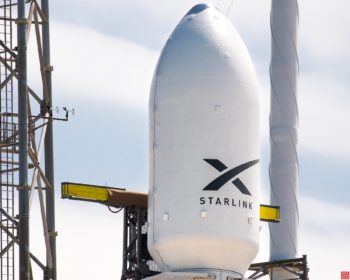
Falcon 9 with the first 60 Starlink satellites before the Starlink v0.9 launch (Credit: Marcus Cote)
The planned constellation will be huge, consisting of nearly 12,000 satellites when completed. For comparison, in 2019, there were only about 1957 functional satellites in orbit around Earth in total. Therefore, the SpaceX constellation would increase the number of active satellites in orbit sevenfold.
These satellites will be in orbits at altitudes between 340 km and 1,300 km and will eventually be interconnected using lasers (the first generation will not yet utilize lasers) and their signal will cover the entire Earth surface in the Ku (12–18 GHz), Ka (26.5–40 GHz) and V (40–75 GHz) bands.
The V and Ku bands will be used by the network’s users, while the V and Ka bands will be used to connect to gateways and for tracking, telemetry and control purposes. The 7,518 satellites located in very low Earth orbit will use V-band for all purposes. Here is a breakdown of the specific frequency bands used by Starlink:
- Transmissions from satellite to user terminals: 10.7 – 12.7 GHz and 37.5 – 42.5 GHz
- Satellite to gateway transmissions: 17.8 – 18.6 GHz and 18.8 – 19.3 GHz and 37.5 – 42.5 GHz
- Transmissions from terminals to satellites: 14.0 – 14.5 GHz and 47.2 – 50.2 GHz and 50.4 – 51.4 GHz
- Transmissions from gateways to satellites: 27.5 – 29.1 GHz and 29.5 – 30.0 GHz and 47.2 – 50.2 GHz and 50.4 – 51.4 GHz
- Tracking, telemetry and control (downlink): 12.15 – 12.25 GHz and 18.55 – 18.60 GHz and 37.5 – 37.75 GHz
- Tracking, telemetry and control (uplink): 13.85 – 14.00 GHz and 47.2 – 47.45 GHz
Satellites will communicate either directly with user terminals (see the section below) or with gateways, which will be typically located near major Internet nodes. As of November 2019, SpaceX was authorized to operate six Ku gateways located in different places around the US. These test gateways will operate in Ku band and SpaceX will use them “to deliver broadband data between the first-generation satellites of its NGSO system and terrestrial Internet exchange points”. Reddit user daedalus_j managed to photogragh these antennas near North Bend. They are located next to Level 3 Communications, a Tier 1 network.
In addition, SpaceX plans to initially operate two ground stations for telemetry, tracking and control – one on the US West Coast and one on the East Coast (in Brewster, WA). All the SpaceX ground stations are listed in this map.
And what kind of connection parameters will this constellation offer? According to SpaceX, users can expect “gigabit speeds” and very low latency at around 20–50 milliseconds, which is more than sufficient even for playing latency-sensitive online games. Eventually, the latency might be reduced below 10 milliseconds. In Fall 2019, SpaceX demonstrated the ability of Starlink to provide speeds of 610 Mbit/s to a flying military airplane. In contrast, the current satellite internet services are much slower and their main disadvantage is the high latency of approximately 600 milliseconds due to the placement of satellites in the geostationary orbit at 35,000 km. This delay is noticable even during normal use, let alone when playing an online shooter.
Compared to conventional networks, satellites in low Earth orbit have some advantages. For one, light travels slower through fiber optic cables than it does in free space (in addition, the terrestrial data must be routed through many intermediate points which may not represent the physically shortest route). This means that Starlink should enable faster long distance communication, which might be useful for high-frequency trading and other applications. However, until Starlink is up and running, we do not know what kinds of plans will SpaceX offer and what kinds of limits it will set, and we do not yet know the actual speeds and latency that will be achieved in practice.
Elon Musk also revealed that Starlink’s network protocol “will be simpler than IPv6 and have tiny packet overhead”. Additionally, the network will provide “end-to-end encryption encoded at firmware level“.
Satellites
The development and production of Starlink satellites takes place in Redmond, Washington, and SpaceX is not currently planning to move production elsewhere. The production of the first 60 satellites took a couple of months, but by January 2020 SpaceX was making 7 satellites a day.
They are the world’s first operational satellites equipped with ion engines that use krypton gas. Krypton is less efficient than the more traditional xenon, so bigger tanks are needed, but krypton is 10 times cheaper. The engines have a specific impulse of about 1500 seconds and will be used to move the satellites to their target orbit, then maintain it and eventually deorbit.
Because the ion engines are fixed, they cannot gimbal to vector their thrust. So to control the attitude of the satellites, momentum wheels are used. Their desaturation is done with magnetic torque rods.
Satellites can track their position using GPS and a SpaceX-developed star tracker system. That enables the satellites to steer its antennas more precisely and also automatically avoid orbital debris and other satellites. Information about these objects from NORAD’s database is uploaded to the satellites.
Deployment of Starlink satellites took place at an altitude of 450 km during the first test mission in May 2019 but SpaceX later requested permission to deploy the satellites at a lower altitude. The request was temporarily granted by the FCC and this lower altitude was used for the first time on the Starlink v1-1 mission in November 2019 when the satellites were deployed at 280 km (for Starlink v1-2 the deployment happened at 290 km). Starting with mission v1-4, satellites are being deployed directly into an elliptical orbit (approximately 211 km x 386 km x 53°).
The deployment process itself is very unique. Falcon 9 upper stage starts rotating slowly along its Y axis and then the whole stack of 60 satellites separates. The system does not contain any springs, only the moment of inertia causes the satellites to slowly spread out over time. The satellites might even lightly bump into each other during deployment, but they are designed to handle it.
Each of the 60 satellites launched during the Starlink v0.9 mission had a mass of 227 kg, according to SpaceX. However, this is the first generation of satellites and the design is constantly changing, so the mass on the following Starlink v1-1 mission increased to 260 kg.
The satellites have a very flat design so that SpaceX can fit as many of them as possible inside the rocket’s fairing. Each satellite is equipped with a single folding solar panel made of standardized cells.
Starlink satellites are equipped with one solar array instead of two, minimizing potential points of failure pic.twitter.com/bJirVr67fF
— SpaceX (@SpaceX) May 24, 2019
Each satellite is equipped with four powerful phased-array antennas and two parabolic antennas. Future generation of satellites should get laser interlinks. At the moment, the satellites are only interconnected via gateways on the ground, and Elon Musk said some gateways would also need to be placed on ships at sea to ensure global coverage.
Every 60 satellites represent about 1 terabit of useful capacity, but the total capacity might actually be 2-3 terabits. That means each satellite should have a capacity between 16 and 50 Gbps.
Elon Musk said that the cost to launch the satellites is currently higher than the cost to make them, which suggests that the production of one satellite costs no more than $500,000. Satellites are relatively inexpensive because SpaceX self-produces them and with so many satellites being made, economies of scale reduce the production costs.
Satellites are expected to be outdated after 5 years of operation and will have to be periodically replaced by newer-generation satellites. The short lifespan reduces the production cost of each satellite and also enables faster innovation. The company can also respond more quickly to changing customer demands.
User terminals
The end-user will be able to connect to the Starlink satellites using a special terminal the size of a medium pizza (0.48 meters in diameter). This device has a phased-array antenna that can steered its signal electronically. Switching between satellites should be imperceptibly quick. The terminal will need a unobstructed view of the sky and works even while moving, so it can be placed on a car, boat or plane. SpaceX is aiming for the terminal’s price to be no more than $200, but Elon Musk admitted recently that terminal cost is the toughest challenge right now.
In February 2019, SpaceX filed an application with the FCC for permission to operate up to a million of these user terminals in the United States. That application was granted in March 2020.
Elon Musk described the terminal as looking like a thin, flat, round disc on a stick and having motors to automatically self-adjust to optimal position. Installation is supposed to be extremely simple – just plug the terminal in an point it at the sky. In June 2020, first photos of prototype terminals surfaced online. Around the same time, the first photo of a Starlink transceiver appeared.
- Starlink user terminal prototypes (Credit: /u/darkpenguin22)
- Starlink user terminal prototypes (Credit: /u/darkpenguin22)
- Starlink user terminal prototypes in Boca Chica (Credit: bocachicagal / NASA Spaceflight)
- Starlink transceiver (Credit: @ChanelRion)
The communication between satellites and terminals will be influenced by weather (rain, heavy clouds, etc.), but it is not clear how much of a problem this will be in practice.
In January 2020, the user terminals were being manufactured at low volumes in Hawthorne but the plan is to move the production elsewhere later.
Elon Musk has one terminal at his house and he used it to send a pair of tweets in October 2019:
Whoa, it worked!!
— Elon Musk (@elonmusk) October 22, 2019
Project schedule
Two test satellites, named Tintin A and Tintin B, were launched by SpaceX in February 2018 as a secondary payload on the Paz mission. With these two satellites, the company tested laser links between them along with communications with several ground stations that were deployed at various SpaceX facilities in Hawthorne, McGregor, Brownsville and Redmond. Another station was located in the Tesla building in Fremont and there were also three mobile stations placed on vans. These test satellites orbit at an altitude of 514 km but started being deorbited in 2020.
SpaceX then began launching a larger number of first-generation satellites onn May 24, 2019, launching the first 60 units on the Starlink v0.9 mission. The FCC requires the entire constellation consisting of 11,924 satellites to be completed by November 2027 (and at least half of all satellites must be launched by March 2024). But even after the constellation is completed, SpaceX will not stop launching new satellites, because by that time it will be necessary to start replacing old satellites that were deployed at the beginning.
The company wants to start offering a commercial service in Canada and northern parts of the United States in the second half of 2020. Internal beta testing is expected to begin in the summer of 2020 and public beta should be available around October 2020, or after 14 launches. However, SpaceX’s COO Gwynne Shotwell cautioned that the quality of service might not be great during the initial phase as the company works out bugs, optimizes the operation and deploys more satellites. Elon Musk also said Starlink service could be offered in Africa in 2021.
Project financing
SpaceX President Gwynne Shotwell estimates that completing the Starlink constellation might cost about 10 billion USD or more.
In 2015, Google and Fidelity invested a billion dollars in SpaceX and it is believed that the main reason was the Starlink project. US Air Force also contributed 28.7 million dollars for “connectivity demonstrations to Air Force ground sites and aircraft for experimental purposes”.
Elon Musk says SpaceX has enough capital to build a functional constellation of several hundred satellites. Obtaining additional capital would only be needed if something went wrong. But he said that SpaceX had no problem getting more capital – he said that in the last investment round there had been more interest from investors than needed.
SpaceX has not yet signed any customers, but negotiations are ongoing with strategic partners such as telecommunications companies in countries with poor internet access.
SpaceX also received $28 million from the U.S. Air Force and they are working together to test Starlink for potential military use.
Starlink might be spun-off from SpaceX and become a separate, publicly-traded company. This won’t happen for a few years, though.
SpaceX also gets additional funds by offering rideshare services for other small satellites on their regular Starlink launches. First time SpaceX carried secondary payloads on a Starlink mission was in June 2020. Falcon 9 launched 58 Starlink satallites along with 3 SkySats for Planet. Many more shared launches like that are planned.
Launching the satellites
How does SpaceX plan to launch several thousand satellites in just a few years? The company announced that it intends to do so with its Falcon 9 rocket and the key to success will be its reusability enabled by the much improved Falcon 9 variant called Block 5. Each Falcon 9 booster should be reusable at least 10 times.
If SpaceX’s plans come to fruition, the rapid reusability of Falcon 9, combined with several active launch pads designed for fast turnaround, could enable a large number of satellites to be launched every year relatively cheaply. On each Starlink mission, 60 satellites are usually launched and Elon Musk estimated that Falcon 9 could launch 1,000–2,000 Starlink satellites a year. In the first half of 2021, SpaceX launched one Starlink mission every two weeks on average.
Starlink will connect the globe with reliable and affordable high-speed broadband services pic.twitter.com/dWVvPwVWU4
— SpaceX (@SpaceX) May 24, 2019
The main limiting factor when launching the Starlink satellites is currently the size of the rocket’s fairing, not the rocket’s payload capacity. That means that using Falcon Heavy would not allow SpaceX to launch significantly more satellites at a time because the fairing is the same size as the one on Falcon 9. Interestingly, the fairings used on Starlink launches aren’t equipped with acoustic tiles that normally protect the payload from vibrations and noise during launch. They might have been removed in order to increase available space inside the fairing in order to fit in as many satellites as possible.
However, SpaceX might develop a larger fairing for Falcon Heavy to meet requirements for certain military launches, so it’s possible they might start using FH for Starlink. But there have been no indications that SpaceX is planning something like that. It’s also unclear if using Falcon Heavy for Starlink would actually be more economical.
SpaceX is developing the Starship vehicle which has a significantly larger payload bay which can carry 400 Starlink satellites. However, according to Elon Musk, Starship is not required to complete the constellation. That said, Musk hopes that Starship will begin flying long before SpaceX launches all 12,000 satellites. Compared to Falcon 9, Starship launch costs are expected to be at least 5 times lower due to its complete reusability.
List of launches
In total, SpaceX has launched 1678 satellites of the v1.0 variant so far. Of those, 1651 are still on orbit (a few of them are not functioning, though).
| Date (UTC) | Mission | Sats | Orbit | Incl. | Notes |
| Feb 22, 2018 | Paz | 2 | 512 km | 97.46° | Two test satellites, Tintin A and B, were launched on this mission as a secondary payload |
| May 24, 2019 | Starlink v0.9 | 60 | 550 km | 53° | First batch of 60 Starlink satellites (prototypes) |
| Nov 11, 2019 | Starlink v1-1 | 60 | 550 km | 53° | 60 satellites with improved design intended for commercial operation |
| Jan 7, 2020 | Starlink v1-2 | 60 | 550 km | 53° | 60 more satellites for commercial operation, one of them had experimental darkening treatment |
| Jan 29, 2020 | Starlink v1-3 | 60 | 550 km | 53° | 60 more satellites for commercial operation |
| Feb 17, 2020 | Starlink v1-4 | 60 | 550 km | 53° | 60 more satellites for commercial operation |
| Mar 18, 2020 | Starlink v1-5 | 60 | 550 km | 53° | 60 more satellites for commercial operation |
| Apr 22, 2020 | Starlink v1-6 | 60 | 550 km | 53° | 60 more satellites for commercial operation |
| Jun 4, 2020 | Starlink v1-7 | 60 | 550 km | 53° | 60 more satellites for commercial operation, one of them had an experimental sunshade |
| Jun 13, 2020 | Starlink v1-8 | 58 | 550 km | 53° | 58 more satellites for commercial operation + secondary payload for Planet |
| Aug 7, 2020 | Starlink v1-9 | 57 | 550 km | 53° | 57 Starlink satellites + secondary payload for BlackSky. All sats had sunshades for the first time. |
| Aug 18, 2020 | Starlink v1-10 | 58 | 550 km | 53° | 58 more satellites for commercial operation + secondary payload for Planet |
| Sep 3, 2020 | Starlink v1-11 | 60 | 550 km | 53° | 60 more satellites for commercial operation |
| Oct 6, 2020 | Starlink v1-12 | 60 | 550 km | 53° | 60 more satellites for commercial operation |
| Oct 18, 2020 | Starlink v1-13 | 60 | 550 km | 53° | 60 more satellites for commercial operation |
| Oct 24, 2020 | Starlink v1-14 | 60 | 550 km | 53° | 60 more satellites for commercial operation |
| Nov 25, 2020 | Starlink v1-15 | 60 | 550 km | 53° | 60 more satellites for commercial operation |
| Jan 20, 2021 | Starlink v1-16 | 60 | 550 km | 53° | 60 more satellites for commercial operation |
| Jan 24, 2021 | Transporter-1 | 10 | 560 km | 97,6° | First 10 satellites for polar orbit, equipped with lasers for inter-satellite communication |
| Feb 4, 2021 | Starlink v1-18 | 60 | 550 km | 53° | 60 more satellites for commercial operation |
| Feb 16, 2021 | Starlink v1-19 | 60 | 550 km | 53° | 60 more satellites for commercial operation |
| Mar 4, 2021 | Starlink v1-17 | 60 | 550 km | 53° | 60 more satellites for commercial operation |
| Mar 11, 2021 | Starlink v1-20 | 60 | 550 km | 53° | 60 more satellites for commercial operation |
| Mar 14, 2021 | Starlink v1-21 | 60 | 550 km | 53° | 60 more satellites for commercial operation |
| Mar 24, 2021 | Starlink v1-22 | 60 | 550 km | 53° | 60 more satellites for commercial operation |
| April 7, 2021 | Starlink v1-23 | 60 | 550 km | 53° | 60 more satellites for commercial operation |
| April 29, 2021 | Starlink v1-24 | 60 | 550 km | 53° | 60 more satellites for commercial operation |
| May 4, 2021 | Starlink v1-25 | 60 | 550 km | 53° | 60 more satellites for commercial operation |
| May 9, 2021 | Starlink v1-27 | 60 | 550 km | 53° | 60 more satellites for commercial operation |
| May 15, 2021 | Starlink v1-26 | 52 | 550 km | 53° | 52 more satellites for commercial operation + two secondary payloads |
| May 26, 2021 | Starlink v1-28 | 60 | 550 km | 53° | 60 more satellites for commercial operation |
| Jun 30, 2021 | Transporter-2 | 3 | 560 km | 97,6° | 3 more satellites for polar orbit |
(Upcoming launches can be found on the Launch Manifest page.)
Safety and space debris
There are more and more objects in orbit around Earth – not just active satellites, but also spent rocket stages, various small and large pieces of debris, broken satellites, etc. Depending on the debris’ orbit, it can take months or even thousands of years for the objects to deorbit on their own. Thus, governments, companies and many experts are rightly concerned about the threat that space debris represents (see Kessler syndrome) as a result of deploying multiple large-scale satellite constellations planned by SpaceX and others.
However, SpaceX claims that the increased risk is not nearly as high as it might seem. Starlink satellites are small and there is an incredible amount of space around the Earth. In addition, the constellation is designed in a way to minimize the risks of creating space debris:
- Starlink satellites have their own engines and are able to avoid a possible collision with other objects, whether they’re another satellite, a piece of space debris or a non-functional Starlink satellite.
- The first group of 1584 satellites will be launched to a very low orbit, so if any of them are found to be inoperative after deployment, they will deorbit and burn up very quickly. Only the functional satellites would be moved to the final higher orbit after deployment.
- Satellites reaching their end of life (expected to be about 5 years) will be moved proactively to such an orbit that they will reenter the atmosphere within 1–5 years and the satellite will burn up. This process is much faster than the 25 years currently required by international standards.
- In the case of the 7,518 satellites operating at very low Earth orbit constellation, the problem of space debris kind of solves itself. The satellites will orbit at such a low altitude that they will need to actively maintain the required altitude using engines, otherwise they’d deorbit within weeks due to atmospheric drag. So even if a satellite’s propulsion fails or it stops responding to commands, the satellite will burn up in the atmosphere within a short period of time and will not contribute to the problem of space debris.
On top of that, Starlink satellites are designed to completely disintegrate after deorbiting. That means no part of them will hit the Earth’s surface where it might hurt someone or damage property. The exception are the first few dozen satellites that use an older design where certain components may not completely burn up. The first couple of satellites deorbited in the spring of 2020.
Impacts on astronomy and astrophotography
Soon after launching the first sixty satellites during the Starlink v0.9 mission, it became apparent that the slowly spreading satellites were creating an interesting phenomenon in the night sky in the form of a moving string of lights. As this unusual phenomenon was very visible, it raised concerns among amateur and professional astronomers and astrophotographers. In addition, some radio frequencies used by Starlink satellites could have a negative impact on radio astronomy.
Elon Musk responded to the concerns by saying: “Starlink won’t be seen by anyone unless looking very carefully & will have ~0% impact on advancements in astronomy”. He also said that he sent a note to the Starlink team regarding albedo reduction, or the degree of reflectivity of the satellites. One improvement was to make the body of the satellite black (this change was tested for the first time during Starlink v1-2 in January 2020 and resulted in about 50% reduction in albedo). SpaceX also developed a sunshade to eliminate or minimise light reflecting off the satellite’s body. The company also adjusted the way the satellite’s solar arrays are positioned which should further reduce the visibility of Starlink satellites in the sky.
Additionally, Elon Musk said that SpaceX avoids using “certain lower Ku frequencies specifically for radio astronomy”. The National Radio Astronomy Observatory issued a statement, saying that the organization is working with SpaceX to analyze and minimize the potential impacts of the Starlink constellation on radio astronomy. For example, the creation of exlusion zones around current and future radio astronomy facilities is being considered.
How to watch Starlink satellites in the sky
Under the right conditions, Starlink satellites can be seen in the night sky with the naked eye. To find out viewing opportunities in your region, you can use these simple tools:
Other tools:
Competition
SpaceX is not the only company operating or planning to create a global internet constellation, but most of them are designed for other purposes (Iridium, Orbcomm) or have a very limited capacity due to low number of satellites (HughesNet, Viasat).
The biggest potential competitors for Starlink are constellations from OneWeb, Telesat and Amazon. SpaceX President Gwynne Shotwell said that there is room for more than one megaconstellation offering broadband Internet access.
SpaceX, unlike other companies, can launch its satellites to orbit using its own rockets, which provides considerable savings and gives them a great competitive advantage. However, Elon Musk said that SpaceX will never refuse to launch satellites for a competing constellation if they express interest in their launch services. For example, SpaceX will be launching the O3b mPOWER constellation for SES and OneWeb is considering using SpaceX rockets in the future.
Did you enjoy this article? Check out similarly detailed Compendiums about other SpaceX topics: Starship, Falcon Heavy, OctaGrabber, Fairing recovery and more…
Changelog:
- Jun 30, 2021 – Added Transporter-2 launch which deployed 3 Starlink sats
- May 26, 2021 – Added Starlink v1-28 launch
- May 16, 2021 – Added Starlink v1-26 launch
- May 9, 2021 – Added Starlink v1-27 launch
- May 4, 2021 – Added Starlink v1-25 launch
- Apr 29, 2021 – Added Starlink v1-24 launch and information about FCC granting SpaceX’s request to lower operational orbits of planned satellites
- Apr 7, 2021 – Added Starlink v1-23 launch
- Mar 24, 2021 – Added Starlink v1-22 launch
- Mar 14, 2021 – Added Starlink v1-21 launch and the total number of satellites launched
- Mar 11, 2021 – Added Starlink v1-20 launch
- Mar 4, 2021 – Added Starlink v1-17 launch
- Feb 23, 2021 – Added Starlink v1-19 launch
- Feb 4, 2021 – Added Starlink v1-18 launch
- Jan 24, 2021 – Added information about the 10 Starlink sats that were deployed to polar orbit on Transporter-1
- Jan 20, 2021 – Added the Starlink v1-15 and v1-16 launches
- Oct 24, 2020 – Added the Starlink v1-13 and v1-14 launches
- Oct 6, 2020 – Added Starlink v1-12 launch
- Sep 3, 2020 – Added Starlink v1-10 and v1-11 launches
- Aug 8, 2020 – Added Starlink v1-9 launch
- July 1, 2020 – Large update to add user terminal photos and new information about second-generation Starlink, rideshares and efforts to reduce satellite brightness
- June 13, 2020 – Added Starlink v1-8 launch
- June 4, 2020 – Added Starlink v1-7 launch
- Apr 25, 2020 – Added Starlink v1-6 launch and also new information about proposed change to the the satellites’ orbits
- Feb 21, 2020 – Added Starlink v1-5 launch and also added some new information about ground terminals
- Feb 17, 2020 – Added Starlink v1-4 launch and also added information about satellites being deployed into an elliptical orbit
- Feb 9, 2020 – Added information about watching Starlink satellites in the sky, satellite attitude control and potential Starlink IPO
- Jan 14, 2020 – Updated the list of upcoming Starlink missions and added information about user terminals and satellite production
- Dec 21, 2019 – Updated the list of upcoming Starlink missions and added a mention about the planned test of a satellite with black coating on Starlink v1-2 and also added information about the respacing of the first 1584 satellites that was approved in December
- Nov 11, 2019 – Added information about Ka gateways and the increased satellite mass
- Nov 10, 2019 – Updated the list of frequencies used by Starlink and made some other updates based on recent news (military testing, lower deployment altitude, up to 30,000 additional satellites…)
- Jun 26, 2019 – Added a new section about potential impacts of Starlink on astronomy and astrophotography
- May 26, 2019 – Added a list of past and future Starlink launches, added new pictures and information about the satellites’s design from the official website
- May 23, 2019 – Fixed incorrect information about Telesat not launching any test satellites
- May 22, 2019 – Article first published



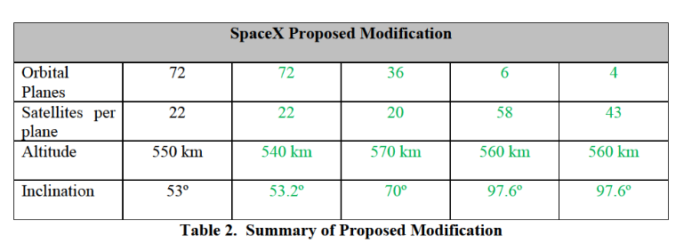

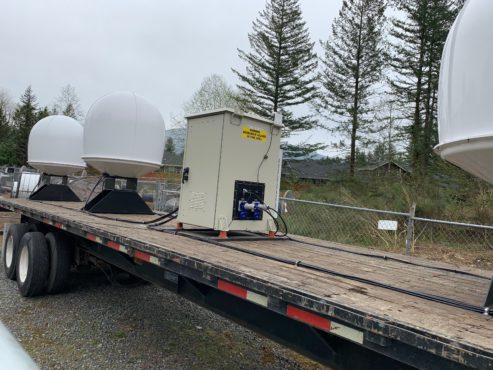
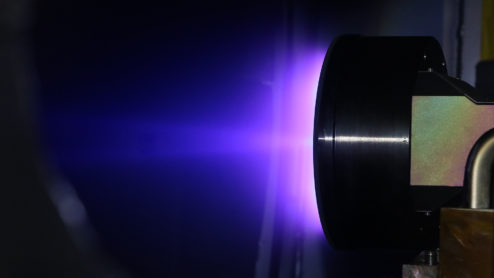

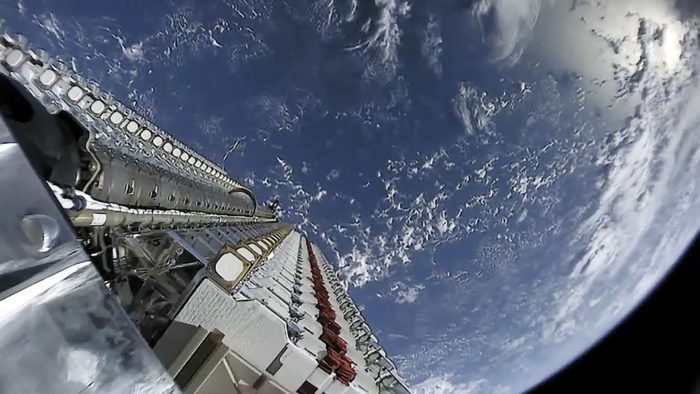

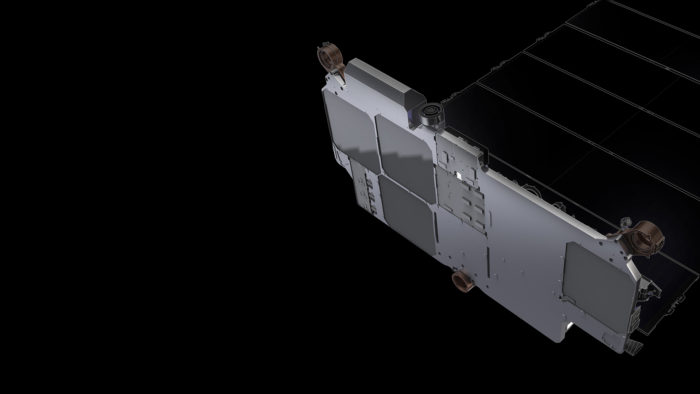
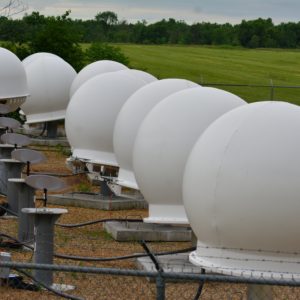

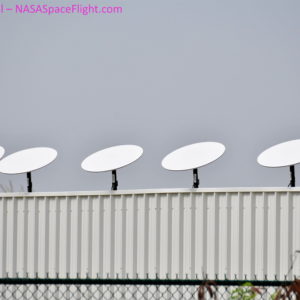
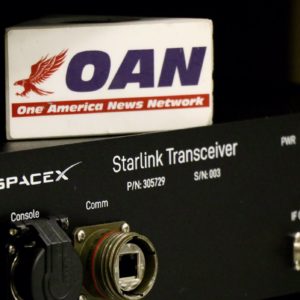
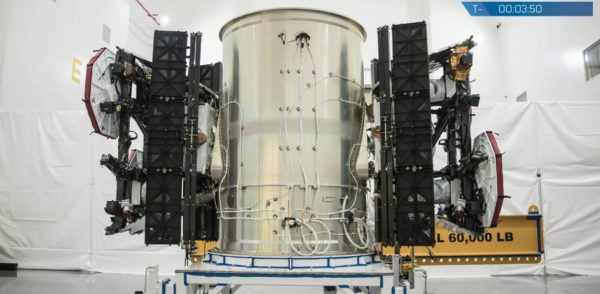

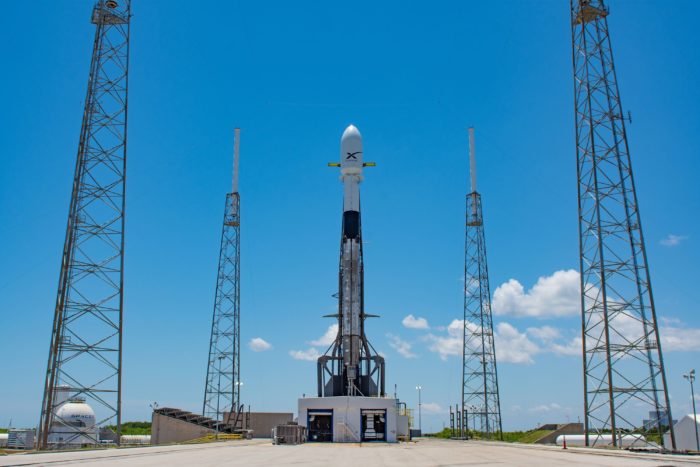
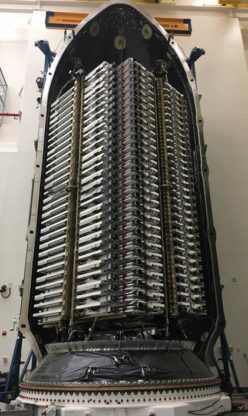

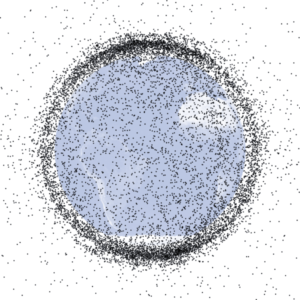
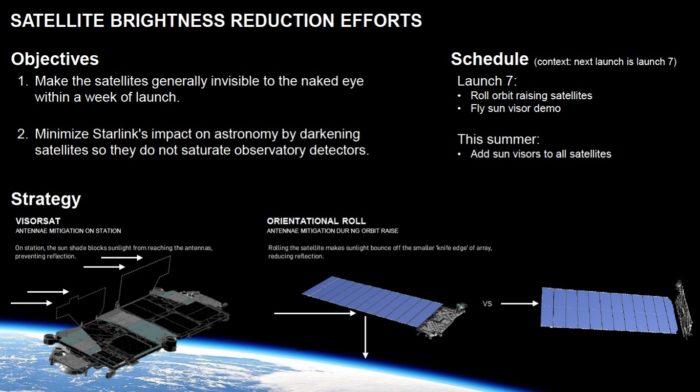

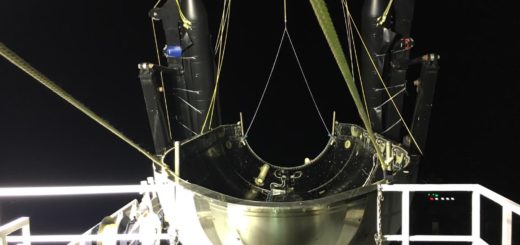
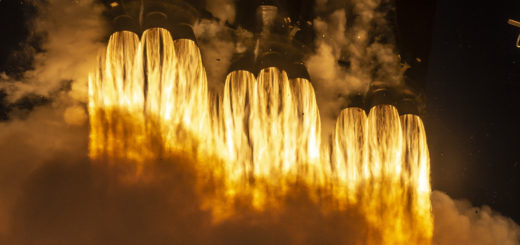
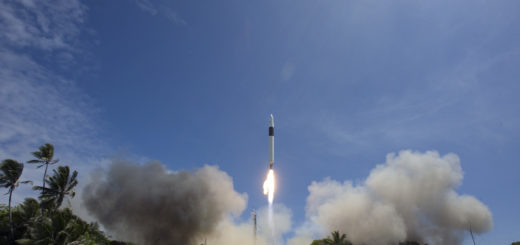

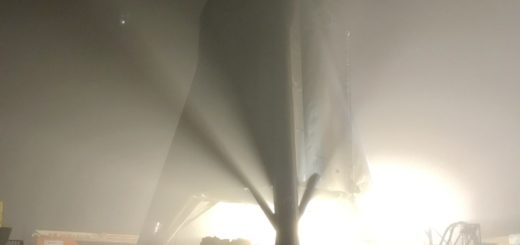
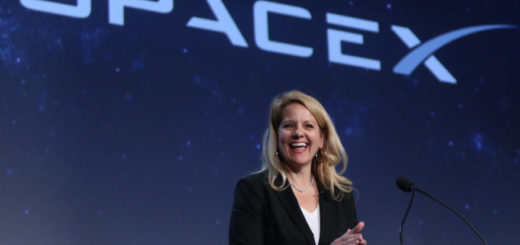
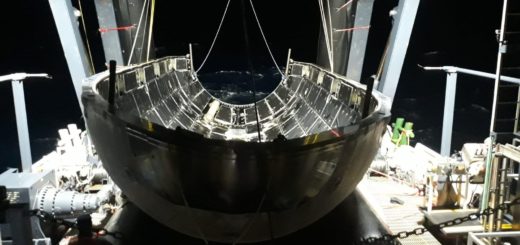
Would love to be a beta tester I am a Retired ATT transmission Specialist with no telco Internet! Do have cable internet but the latency is horrible please consider a professional in radio/ satellite Comms as a beta tester 🙂
I would feed up bandwidth from cable if that would help?
I am an ex Army SATCOM tech who lives in a rural area of Mississippi with no good broadband options. Would love to get in on the beta test.
Retired AT&T transmission engineer in Indianapolis, IN. Good beta test Latitude.
Also congratulations on Dragon. Stepping up for NASA and the USA. Nice to see launch $$$ go to you rather than Roscosmos!
The diameter of the dish is not 0.48m, but is rather 0.58m.
What’s your source? The official FCC documents said 0.48 m.
Do the Tx/Rx antennas have built in heaters for snow and ice?
Do you mean the user antennas? Yes, those have heating to remove snow and ice.
I’ve just asked to be a beta user and provide feedback on the system and to show goodwill I’ve paid for a complete set up.
I’m located in the far southwest of the UK in St Ives Cornwall so I doubt they’ll be interested- but we’ll see I guess.